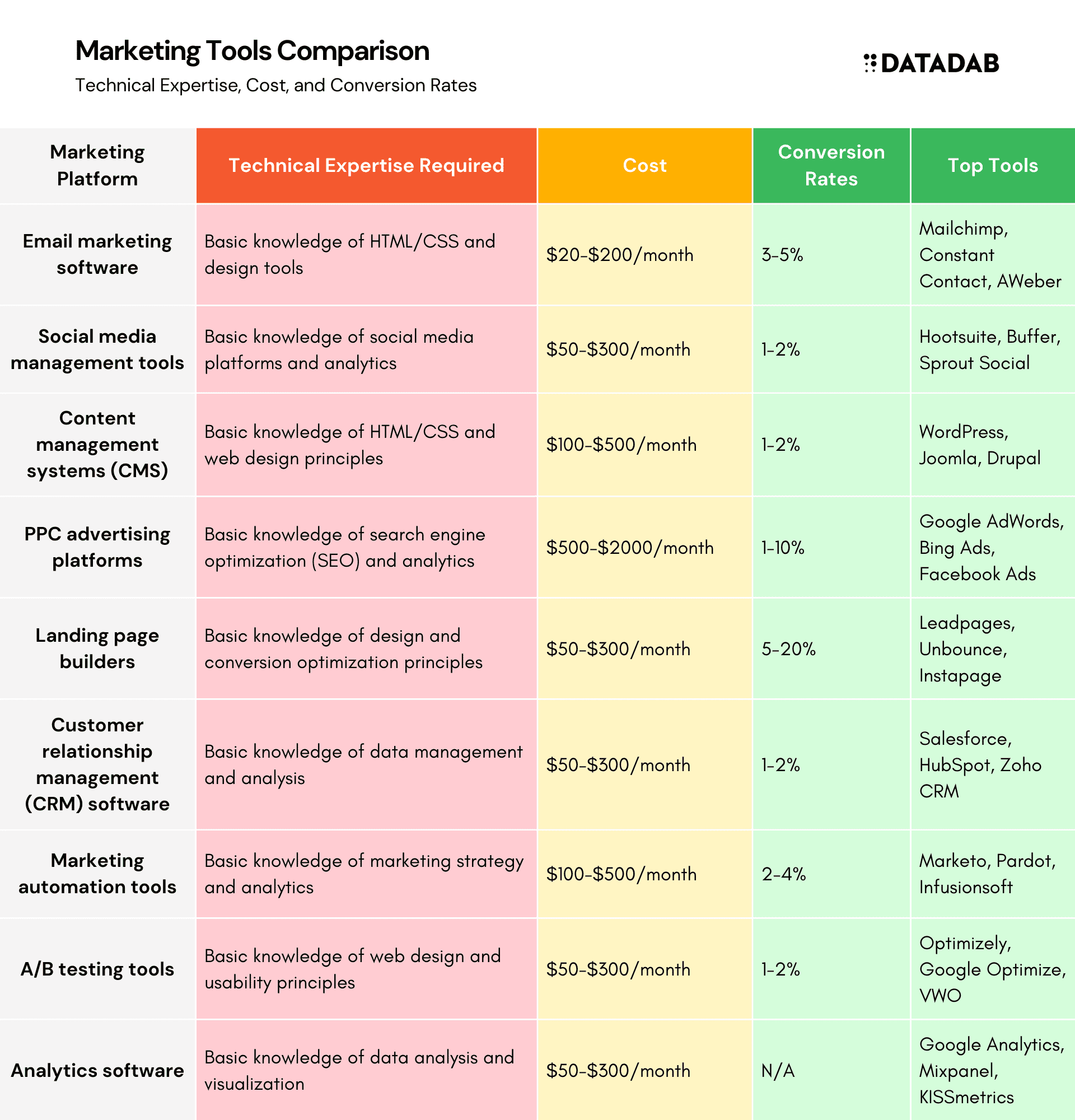In the early days of your startup, you may be scrambling just to get your product out the door. But getting something out the door is only step one. Step two is getting it in front of customers.
And to help you do that here's a quick guide on how to build up a marketing engine in the early days of your startup.
The best day to start marketing was yesterday, but the second-best day is today.
You don't need a ton of money or support to start laying the groundwork for your marketing efforts. All you need is yourself and a willingness to spread the word about what you're making. If you have any kind of network, use that network. And if you don't have a network, that's okay too—there are plenty of ways to build one without relying on who you know.

Do things that don't scale
Your first job as a founder is to do things that don't scale—and in marketing, this means talking to customers on a personal level. Use social media, forums, and other online hangouts to find people who might be interested in what you're building and reach out directly with demos and information about your product. Once you've found some people who will try it out, ask them for feedback so that you can make sure what you're building is useful for them.
Hire a marketing person as early as possible
You need a marketing person, and you need to hire the right one as early as possible.
While marketing is a critical piece of building your business and finding customers, everyone understands that at first, traction can be like pulling yourself out of tar: it’s hard. And this is especially true for marketers who don’t yet have an audience to market to or an established brand or product to drive awareness about.
What does this mean? Your first hire should be a marketer who’s comfortable rolling up their sleeves and doing whatever needs to get done. That may mean manually reaching out to prospective customers one by one when there aren’t enough leads coming in organically through your website or word-of-mouth referrals. This can often be a thankless job, but no one else will if they don’t do it! It's so crucial that you invest in hiring the right people as soon as possible – not only will they help build the foundation of your company culture, but they'll also start building the foundation of your marketing engine right away.
Build and Engage your Audience
Depending on your business and/or market, you might be able to skip the first few steps of this process. If you're in a field with a relatively small number of passionate customers, there's a good chance that building an audience of your own will scale as you grow. But still, the following principles are helpful regardless of whether or not they can help you gain more customers today:
- Build Your Brand
It's easy to get caught up in creating content and posting it on your blog—but building (and keeping) your audience comes down to marketing your brand. Be sure to use every opportunity to showcase what makes you different from the crowd; when people hear about you and think, "I like this," they'll start reading. And once they do, they'll want more—more reasons why they should care about what you're doing, more reasons why they should trust that message, and more reasons why they should have faith in what their experience will be like with your services or products.
- Build Relationships
The most successful bloggers have developed relationships with their readers outside of the conversations at their blogs; this is where those relationships lead. You'll want to look for ways to become an authority figure within the industry by being helpful, accessible, or eloquent—developing sources of influence that others turn to for advice and counsel is one way of doing this. Also, remember that talking about everything means talking about nothing; don't make yourself busy by spending too much time filling pages with writing that no one will read after all else has been said already. Instead, make room for actionable items like a guest post, product recommendations, or tutorials on how to solve problems people are having.
Segmentation, segmentation, segmentation...
The first step is to gain a thorough understanding of your segments. This will help you avoid making the most common mistake of marketing to everyone. Different segments convert differently, so there’s no one right channel or message for them all. The more specific your target market, the easier it will be for you to choose the channels and content that will work best with them. If you generalize too much, you’ll have a more challenging time selecting the right marketing channels or materials to interact with each segment.
Once you’ve chosen which segments to target and understand how they differ from one another, you have enough information to customize your messages for each segment.
With segmentation in mind, adjust your marketing plans accordingly and make sure that every piece of content is tailored specifically for each segment within your audience (don’t distribute anything without doing this first). For instance: if one group uses social media frequently, but another group doesn’t, don’t focus on social media—instead, use email blasts or blog posts
Invest in Content Marketing
Content marketing is an old and effective way to attract new customers and keep your current ones engaged. It can also be a great way to build up your company's reputation as an expert in the field and build trust with potential customers.
Creating content for your blog, email campaigns, resource center, and/or social media presence can be cost-effective to generate leads for potential sales. However, do not underestimate the amount of time and effort it takes to create high-quality content to help you achieve these goals. The most successful marketers spend at least 10 hours per week creating new content (in addition to everything else they have on their plates).
Obsess about Conversion Rate Optimization (CRO)
The first thing to understand about CRO is that it's a process. It requires constant effort, but perseverance will yield significant results over time. Once you begin optimizing your landing pages, you'll need to make an educated guess about how the change will influence your conversion rate (what percentage of people who get to your landing page actually take the action you want them to take). Then you'll measure that activity, and repeat the cycle until you've hit on something that works.
Many businesses make several changes at once when trying out new landing pages. But if you're trying to optimize one thing in particular, don't simultaneously test multiple items at once or else they'll affect each other and it will be difficult to know which of those changes are affecting your conversion rate positively or negatively.
To start this process, create two versions of a page (version A and version B) with a single variable changed between them so you can compare the differences in performance between those two versions. For example, if one of these metrics is not generating enough leads: time spent on a page, the number of clicks, or the number of visits, then tweak an element like image size or heading copy to see if one version performs better than another.
Go to conferences - be the conference!
Use Twitter to connect with the attendees by tweeting at them before the conference if you're on the road. If you can't get there, follow the hashtag and participate in all the discussions.
Take notes during your conference, especially if you're meeting many people. The key is to remember why you met that person and what they do for work. If this is too much for paper business cards, use Evernote or CamScanner on your phone to take photos of each person's card. It allows you to search by name and/or company later when it's time to send a follow-up email or invite them to an event your company is hosting.
Follow up with all of your new contacts within one week after the event, including those who already know about your product and those interested in learning more about it! Set up coffee meetings (if local), get on Skype calls (if distant), pass referrals, etc. Then make sure this becomes a habit for every single networking event.
Invest in Attribution Analysis
You’ll be shocked to know that only a few startups take the time to measure their channels. If you want to know how your marketing engine is working, you’ll need to learn where customers are coming from. Knowing this information helps you optimize your marketing spend and understand how your different channels are performing.
Take a moment each week to look at the different channels and what impact they’re having on your startup. This might be as simple as measuring a channel’s performance in terms of visitors or conversions. It isn't difficult to measure or report on and can easily be integrated into existing reporting systems such as Google Analytics, Kissmetrics or Amplitude.
Focus on Retention as well as Acquisition
Think of it this way: It's cheaper to retain a customer than get a new one. And while you should be working hard on your acquisition strategy, making sure that you're keeping the customers you already have is essential.
Here are some other important things to keep in mind regarding customer retention:
- Focus on creating an excellent product or service. If you've got a great product, people will not only want it; they'll want to come back for more. Apple has mastered this approach with its fanatical following of consumers who can't get enough of their MacBooks and iPhones.
- Create a loyalty program so that people will have an incentive to keep coming back for more. For example, give them something for free if they buy X number of products from you or offer them certain rewards if they remain loyal customers for X number of years. When I was little, my mom would always tell me I could get a toy if I ate all my food and didn't complain about eating veggies (the hardest thing ever). While it seems like bribery at the time, now it's just called intelligent marketing strategy!
- Don't forget to track how many customers are staying with you vs. leaving—this is crucial information in determining whether your retention strategies are working!
Early startup marketing is a skill that takes time to master.
If you're in the early stages of your startup, it's important to start laying a foundation for your marketing engine as soon as possible. Marketing is more than just branding and advertising—it encompasses everything from lead generation to newsletter content.
The best way to think about marketing is as a self-contained system that helps you generate leads, qualify them and turn them into sales. The good news is that getting started with your marketing engine can be done at any stage of business—even if you're bootstrapped. A successful marketing engine is constantly evolving. Regardless of how many resources you have now, it's never too late to build a sustainable strategy that will support your growth in the future.
Another thing that's helpful when thinking about startups and marketing: remember that everything takes time. It's easy to get frustrated by how long it takes to see results after investing so much effort into creating ads or content campaigns. Still, with time, this investment will compound and result in long-term success for your company.
And there you have it! Hopefully, this has given you a little more information about how to build up your marketing engine in the very early days of your business to feel more confident and prepared as you move forward. The most important thing to remember is that it's okay if things don't work out right away—you'll learn from your mistakes and get better, then find a strategy that works for you and stick with it.






